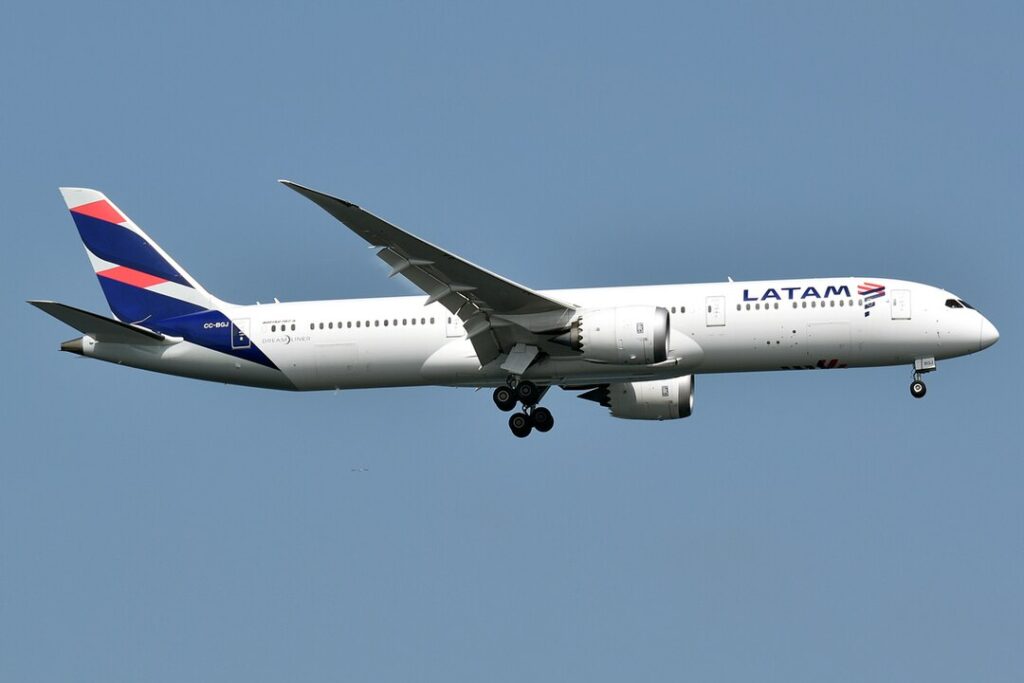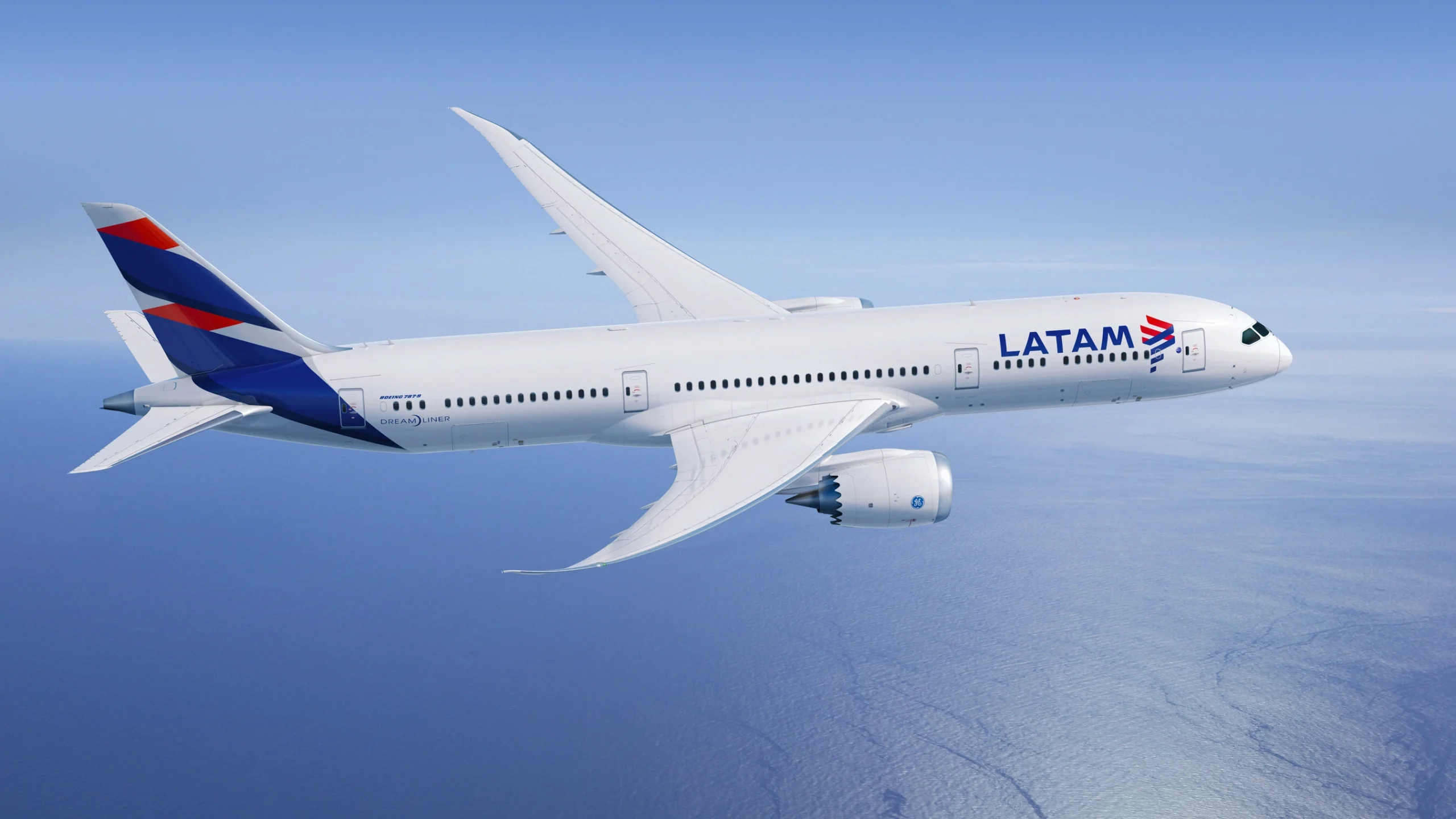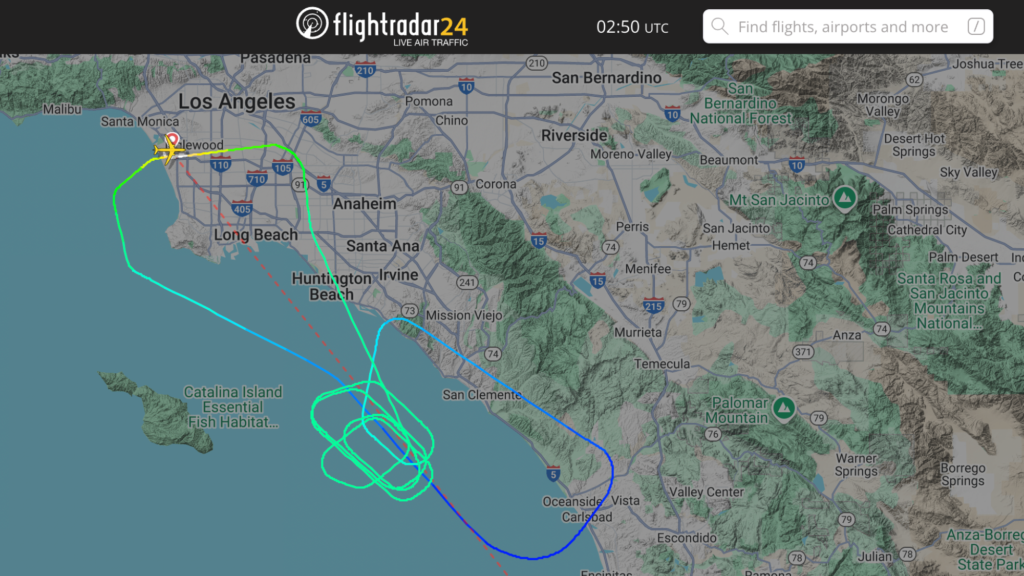LOS ANGELES- A LATAM Airlines (LA) Boeing 787-8 Dreamliner made an emergency landing at Los Angeles International Airport (LAX) with its Ram Air Turbine (RAT) visibly deployed, following nearly an hour of circling over the Pacific Ocean.
The flight, originally bound for Santiago (SCL), returned safely to Los Angeles under its own power. The RAT deployment suggests a significant power system issue onboard the aircraft.


LATAM 787 Lands with RAT Deployed
A LATAM Airlines (LA) Boeing 787-8 Dreamliner experienced a critical in-flight issue on its way to Santiago, Chile (SCL), prompting an emergency landing back at Los Angeles (LAX).
The aircraft entered a holding pattern above the Pacific Ocean for close to an hour before returning to land on Runway 25L, with the Ram Air Turbine (RAT) deployed, an uncommon occurrence during standard commercial operations.
Video footage shared by Airline Videos shows the RAT, a small retractable turbine located beneath the fuselage, clearly visible near the aircraft’s landing gear.
The deployment of this system typically occurs when an aircraft suffers a major electrical or hydraulic failure, often triggered by engine shutdowns or severe power system anomalies.
Despite the emergency, the aircraft taxied to its gate unassisted, indicating that partial onboard systems remained operational.


RAT: Ram Air Turbine
The Ram Air Turbine (RAT) is a safety-critical system designed to generate emergency electrical and hydraulic power. In aircraft like the Boeing 787-8 Dreamliner, it is either manually deployed by pilots or automatically triggered when both engines fail or all onboard power is lost.
Once extended, the RAT harnesses the airflow generated by the aircraft’s forward motion, spinning a small turbine that powers essential systems.
These include flight controls, navigation, and communications, ensuring that the flight crew can maintain aircraft control and coordinate an emergency landing.
While a fuel cutoff can be a potential cause for RAT deployment, other triggers include electrical failures, software faults, or engine-related malfunctions.


Flight Path Analysis
According to Flightradar24 data, the LATAM flight took off from Los Angeles at 23:21 UTC and returned at approximately 1:00 UTC.
The aircraft remained airborne for nearly two hours, spending a significant portion of that time in a holding pattern offshore.
The Great Circle Distance between LAX and Santiago is 8,963 km, highlighting the early phase at which the flight was interrupted.
Reported by Financial Express, the aircraft ultimately returned safely and remained on the ground after the incident. The footage and data have sparked concern and discussion across aviation communities and social media.


Recent Boeing 787 Incidents
This incident adds to a string of recent safety events involving Boeing 787 aircraft. On July 25, a United Airlines (UA) 787-8 Dreamliner en route to Germany was forced to return to Washington Dulles Airport (IAD) after its left engine failed shortly after takeoff.
Pilots declared a Mayday and held over the area before safely landing. These recurring events underscore the critical importance of onboard backup systems like the RAT.
Stay tuned with us. Further, follow us on social media for the latest updates.
Join us on Telegram Group for the Latest Aviation Updates. Subsequently, follow us on Google News


